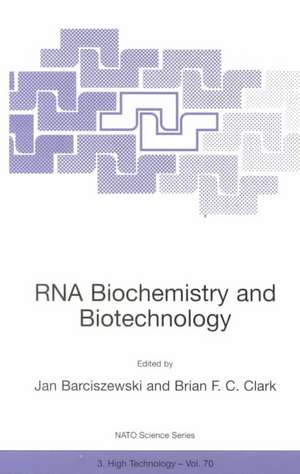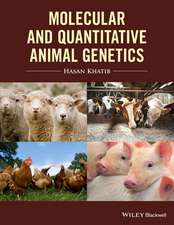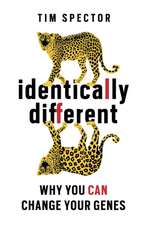RNA Biochemistry and Biotechnology: NATO Science Partnership Subseries: 3, cartea 70
Editat de Jan Barciszewski, Brian F.C. Clarken Limba Engleză Paperback – 31 aug 1999
Readership: Advanced graduate students, Ph.D. students and young scientists as well as specialists in the field.
| Toate formatele și edițiile | Preț | Express |
|---|---|---|
| Paperback (1) | 646.62 lei 6-8 săpt. | |
| SPRINGER NETHERLANDS – 31 aug 1999 | 646.62 lei 6-8 săpt. | |
| Hardback (1) | 651.34 lei 6-8 săpt. | |
| SPRINGER NETHERLANDS – 31 aug 1999 | 651.34 lei 6-8 săpt. |
Din seria NATO Science Partnership Subseries: 3
- 24%
 Preț: 1567.19 lei
Preț: 1567.19 lei - 18%
 Preț: 2106.37 lei
Preț: 2106.37 lei -
 Preț: 393.13 lei
Preț: 393.13 lei -
 Preț: 390.63 lei
Preț: 390.63 lei - 18%
 Preț: 1849.41 lei
Preț: 1849.41 lei -
 Preț: 407.19 lei
Preț: 407.19 lei - 18%
 Preț: 1228.96 lei
Preț: 1228.96 lei - 18%
 Preț: 1843.73 lei
Preț: 1843.73 lei - 15%
 Preț: 642.51 lei
Preț: 642.51 lei -
 Preț: 402.76 lei
Preț: 402.76 lei - 18%
 Preț: 1829.86 lei
Preț: 1829.86 lei -
 Preț: 379.48 lei
Preț: 379.48 lei - 18%
 Preț: 1224.54 lei
Preț: 1224.54 lei -
 Preț: 401.42 lei
Preț: 401.42 lei - 18%
 Preț: 1841.68 lei
Preț: 1841.68 lei -
 Preț: 391.99 lei
Preț: 391.99 lei - 18%
 Preț: 1234.46 lei
Preț: 1234.46 lei -
 Preț: 405.28 lei
Preț: 405.28 lei -
 Preț: 396.62 lei
Preț: 396.62 lei - 18%
 Preț: 1226.73 lei
Preț: 1226.73 lei - 18%
 Preț: 1233.52 lei
Preț: 1233.52 lei - 18%
 Preț: 1228.62 lei
Preț: 1228.62 lei - 5%
 Preț: 377.52 lei
Preț: 377.52 lei - 18%
 Preț: 1830.49 lei
Preț: 1830.49 lei - 20%
 Preț: 336.21 lei
Preț: 336.21 lei - 18%
 Preț: 1225.48 lei
Preț: 1225.48 lei -
 Preț: 397.38 lei
Preț: 397.38 lei - 18%
 Preț: 1830.65 lei
Preț: 1830.65 lei - 15%
 Preț: 650.55 lei
Preț: 650.55 lei - 5%
 Preț: 1416.66 lei
Preț: 1416.66 lei
Preț: 646.62 lei
Preț vechi: 760.73 lei
-15% Nou
Puncte Express: 970
Preț estimativ în valută:
123.76€ • 128.72$ • 103.71£
123.76€ • 128.72$ • 103.71£
Carte tipărită la comandă
Livrare economică 13-27 martie
Preluare comenzi: 021 569.72.76
Specificații
ISBN-13: 9780792358626
ISBN-10: 0792358627
Pagini: 370
Ilustrații: XV, 370 p.
Dimensiuni: 160 x 240 x 23 mm
Greutate: 0.59 kg
Ediția:Softcover reprint of the original 1st ed. 1999
Editura: SPRINGER NETHERLANDS
Colecția Springer
Seria NATO Science Partnership Subseries: 3
Locul publicării:Dordrecht, Netherlands
ISBN-10: 0792358627
Pagini: 370
Ilustrații: XV, 370 p.
Dimensiuni: 160 x 240 x 23 mm
Greutate: 0.59 kg
Ediția:Softcover reprint of the original 1st ed. 1999
Editura: SPRINGER NETHERLANDS
Colecția Springer
Seria NATO Science Partnership Subseries: 3
Locul publicării:Dordrecht, Netherlands
Public țintă
ResearchCuprins
1) Why RNA?.- 2) Algorithms and thermodynamics for RNA secondary structure prediction: a practical guide.- 3) Recurrent RNA motifs: Analysis at the basepair level.- 4) Towards the 3D structure of 5S rRNA.- 5) Structure and dynamics of adenosine loops in RNA bulge duplexes. RNA hydration at the bulge site.- 6) The structure and function of the ribozyme RNAse P RNA is dictated by magnesium(II) ions.- 7) Metal ion-induced cleavages in probing of RNA structure.- 8) Protein-DNA recognition.- 9) Specific interaction between damaged bases in DNA and repair enzymes.- 10) Telomeric DNA recognition.- 11) Recognition of one tRNA by two classes of aminoacyl-tRNA synthetase.- 12) Functional structures of class-I aminoacyl-tRNA synthetases.- 13) Aminoacylation of tRNA induces a conformational switch on the 3’-terminal ribose.- 14) Point mutants of elongation factor Tu from E. coli impaired in binding aminoaycl-tRNA.- 15) RNA structure and RNA-protein recognition during regulation of eukaryotic gene expression.- 16) RNA-aptamers for studying RNA protein interactions.- 17) Probing of ribonucleoprotein complexes with site-specifically derivatized RNAs.- 18) The IRE model for families of RNA structures: Selective recognition by binding proteins (IRPs), NMR spectroscopy and probing with metal coordination complexes.- 19) Functional analysis of RNA signals in the HIV-1 genome by forced evolution.- 20) Interaction of native RNAs with Tat peptides.- 21) Biogenesis, structure and function of small nucleolar RNAs.- 22) RNA structure modules with trinucleotide repeat motifs.- 23) Phosphorothioate oligonucleotides as aptamers of retroviral reverse transcriptases.- 24) Oxathiaphospholane method of the stereocontrolled synthesis of phosphorothioate analogues of oligonucleotides.- 25) Towardsimproved applications of cell-free protein biosynthesis– the influence of mRNA structure and suppressor tRNAs on the efficiency of the system.- 26) RNA on the web.- 27) How risky is direct democracy for basic science?.











